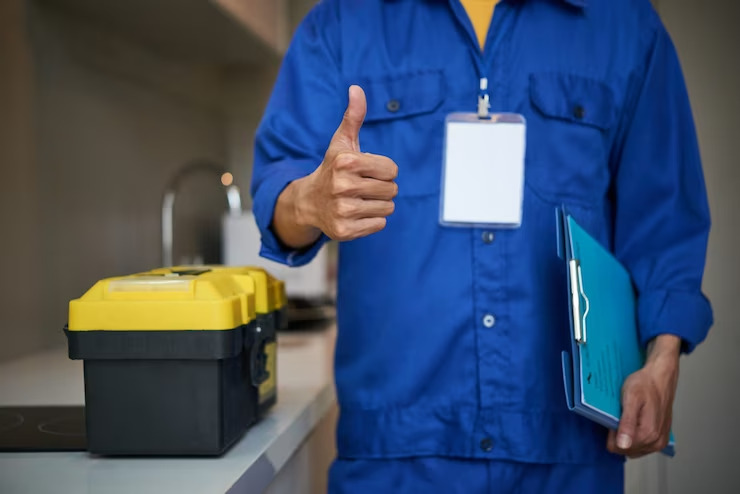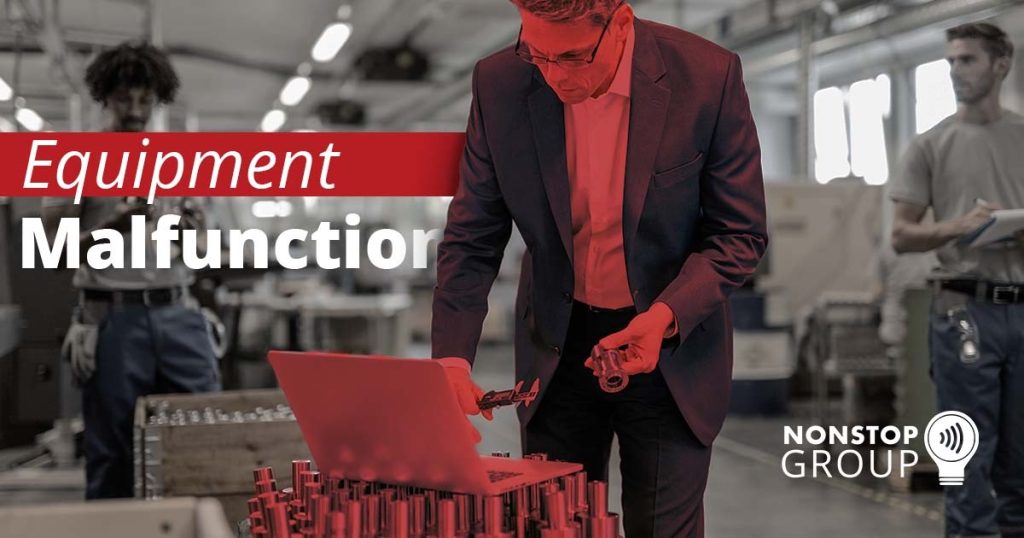6 Min Read

As a business professional, you understand the vital role that equipment plays in any industrial setting – it is the backbone of productivity and efficiency. But what happens when an unexpected equipment malfunction occurs? The effects can be devastating, disrupting production processes, causing delays, and incurring hefty financial losses.
That’s why it’s critical to be proactive about addressing the issue of equipment malfunctions. In this guide, we will take an in-depth look at the costs associated with equipment breakdowns and provide effective strategies for mitigating their impact. Get ready to discover the keys to maintaining equipment reliability and ensuring your business stays on track. Let’s dive in!
In facilities with heavy compliance regulations, digital inspection systems offer numerous benefits, including optimized maintenance, reduced downtime, and improved overall safety and compliance. This article will delve into the advantages and real-world applications of digital inspection for facilities.
What is an Equipment Malfunction?
Equipment malfunction occurs when a piece of equipment fails to perform as intended, leading to costly disruptions. This dysfunction can be classified into complete or partial failure. Complete equipment malfunction means the equipment is no longer functional, while partial failure means the equipment is still operational but not at its full performance.
Unexpected equipment malfunctions can result in production delays, lost production hours, unplanned downtimes, and safety issues. Studies estimate that businesses can suffer a loss of up to $260,000 per hour due to downtime caused by equipment malfunctions.
Fortunately, with the right tools, a modern CMMS system, and a proactive approach, facility managers can quickly resolve equipment malfunctions and minimize their impact.
5 Common Types of Equipment Malfunctions
To ensure the proper functioning of equipment and minimize disruptions, it’s important to be aware of common forms of equipment malfunction. Factors such as environmental conditions, equipment usage, high vibration, and exposure to harsh chemicals can contribute to the severity of equipment failures.
The following are some of the most common types of equipment malfunction that every company should be aware of to address and resolve issues and improve equipment management and workplace safety:
Electrical Failure
An electrical failure is always a risk for facilities with electrical equipment and heavy machinery, leading to electrocutions, fire, and machine damage. This malfunction can arise due to problems with the wiring, switches, or circuit boards, or issues with the power supply.
Mechanical Failure
Your company may have to spend hundreds of dollars to fix an unexpected malfunction in the mechanical device or system of critical equipment. It can be a loss of functionality or a complete failure of the device or system.
This can include broken gears, bearings, shafts, worn-out motors, or misaligned components. A mechanical failure can occur due to wear and tear, improper use, manufacturing defects, corrosion, or fatigue.
Thermal Damage
Environmental changes can significantly affect some assets and equipment. Exposure to extreme temperatures like heat conditions can lead to equipment damage or breakdowns, whereas frigid temperatures can cause cold damage to the equipment.
It’s paramount to regularly inspect and maintain equipment to reduce thermal damage, prevent these malfunctions, and ensure that the equipment continues to function correctly.
Smarter Asset Tracking With NFC Tags
Learn more about how NonStop Suite's NFC Asset Tracking Solution can help your Enterprise streamline operations to new heights.
Get A Free Product Tour
What Are The Risks Associated With Equipment Failure?
Unattended equipment failure can pose serious challenges for your company, including:
- Safety Hazards: Inadequately maintained equipment can put workplace safety at risk, increasing the chances of accidents and injured workers. Employees working near malfunctioning equipment may be exposed to dangers such as electrocution, traumatic brain injuries, spinal cord injuries, crush injuries, and amputations.
- Property Damage: When equipment malfunctions, it can further damage the equipment itself and create a ripple effect for the nearby assets or facilities.
- Unplanned Downtime: Unexpected equipment malfunctions can result in unscheduled downtime, production disruptions, and revenue losses.
- Financial Losses: Repairing or replacing malfunctioning equipment can result in unplanned and unbudgeted expenses that can significantly impact your company’s budget.
- Reputation Damage: Poorly functioning equipment can create unsafe conditions or environmental hazards, which can result in penalties or legal action for non-compliance with safety regulations or environmental standards. This can also harm your company’s reputation.
What is The Cost of Equipment Malfunctions?
Equipment malfunctions can significantly impact a business, leading to direct and indirect costs that can add up quickly. Being a costly business challenge, equipment failure is followed by unwanted and unnecessary expenses accounting for the following multiple sections:
Repair or Replacement Costs
Equipment that lacks proper maintenance and inspection depreciates quickly, leading to corrective repairs or complete replacements in severe cases.
Lost Production Costs
Equipment breakdown throws a functional facility into maintenance mode, halting the profitable production processes. This disruption minimizes productivity and accounts for lost production hours and lost revenue.
Delayed Delivery Costs
Due to equipment malfunction, the production process is put on hold, and subsequently, the delivery is delayed. The costs of these delays can be significant, including additional labor costs, overtime costs, lost productivity, lost sales, and damage to the company’s reputation.
What Are The Underlying Causes of Equipment Malfunctions?
Equipment malfunction can occur for various reasons, including poor design, lack of maintenance, manufacturing defects, wear and tear, and more. To subside the negative impacts of malfunctions, it is paramount for any organization to be well aware of the root cause of the problem. An asset or equipment can fail to function owing to the following significant contributors:
Regular Wear and Tear
One of the most common reasons behind an equipment malfunction is the inevitable wear and tear over time. Continual use of machinery is bound to depreciate its components and cause metal fatigue. Bad operating conditions, absence of proper regular maintenance, operator error, and exposure to poor storage conditions combine with declining the equipment’s life.
Operator Error
Operator error, also known as human error, is another leading cause of equipment malfunction. It involves misuse or overuse, distraction, substandard decisions, and deviation from the actual process of the equipment. Operator error can cause several issues, such as operational downtime and severe safety incidents.
Failure To Perform Proper Maintenance
Organizations on a limited budget tend to focus only on reactive or corrective breakdown maintenance. This approach is disastrous for complex and critical equipment’s reliability, functionality, and lifespan. Lack of routine and preventive maintenance leaves room for substantial deferred maintenance backlogs, followed by major operational issues and costs.
Similarly, going overboard with preventive maintenance is also a bad practice. Every maintenance check performed on a machine exposes it to a range of potential hazards that — if left unchecked, can eventually result in equipment breakdown. Finding the right balance is the key!
Distorted Reliability Culture
Some facilities unintentionally commit the detrimental mistake of mistaking the definition of equipment reliability. They see reliability as the quick fix of an equipment failure as it restores the plant and improves MTTR (Mean time to repair).
However, equipment reliability is far beyond these metrics. It requires meticulous attention to resolving the risk of these failures, enabling a greater focus on equipment availability, efficiency, functionality, as well as fitness for purpose, and cost.
How to Prevent and Manage Equipment Malfunctions Effectively?
Based on the severity of the malfunction, your company may face serious challenges. It is, however, possible to mitigate the risks of damage and ensure the smooth operation of equipment and facilities by taking a proactive approach to maintenance and equipment management.
Below are some of the most practical and effective strategies to successfully prevent equipment malfunction:
Follow The Preventive Maintenance Schedules
One effective way to enhance equipment reliability is by focusing on preventive maintenance and inspections.
Conduct regular inspections to pinpoint any potential failures ahead of time. Based on this analysis, schedule and strictly follow the routine maintenance plan for streamlining the path to your company’s maintenance objectives.
To further improve and smoothen the maintenance execution process, it is beneficial to implement a checklist system.
Pro Tip: Take advantage of The NonStop Suite’s dynamic e-forms to keep track of all the maintenance and inspections performed. This automated checklist stores your maintenance history in a cloud database and makes it easier to access, record, and share maintenance reports and data.
Don’t Onboard Operators Untrained With The Equipment
Putting an untrained or inexperienced operator at the controls potentially invites equipment malfunctions and process disruptions.
Equipment operators must be equipped with the knowledge, training, and skills to operate heavy machinery safely. Conversely, its highly probable that the unfamiliar operator unknowingly misuses the machinery, increasing equipment breakdowns and downtime.
Considering all these potential problems, OSHA claims that an untrained operator is susceptible to on-the-job accidents and personal injury. And as a business, it is your responsibility to provide appropriate compensation to the injured worker.
Implement a Modern CMMS To Manage And Prevent Equipment Malfunctions
CMMS (Computerized Maintenance Management System) is the most promising solution against equipment malfunctions. It is easy to deploy in your company’s existing maintenance strategy and simplifies the processes from the ground up.
With the help of CMMS, facilities can quickly organize and modernize their preventive maintenance and inspection tasks. This efficiency acts as an active defense system against equipment failures while keeping the downtimes as low as possible
Conclusion: Prevent Equipment Malfunctions With The NonStop Suite!
Equipment malfunction can be a serious problem that can put a dent in the productivity and bottom line of your company. Don’t let it happen to you! The solution to this issue is simple and effective – The NonStop Suite, the ultimate CMMS solution from The NonStop Group.
The NonStop Suite is a powerful asset management tool designed to revolutionize the way you manage your equipment. With its advanced features, you can easily automate tasks such as work order creation, SOP setup with digital checklists, equipment monitoring using smart NFC tags, and access to critical data through a cloud-based database.
By deploying The NonStop Suite, you’ll be equipping your organization with a robust maintenance strategy that will minimize equipment malfunctions, reduce repair costs, and minimize production downtime. This solution will help you achieve equipment reliability, improve efficiency, and drive overall success for your company.
Don’t miss out on these amazing benefits! Contact The NonStop Group today and book a free consultation and product tour. The NonStop Suite is the solution you need to tackle equipment malfunctions and achieve success for your company.
The NonStop Suite is a comprehensive package of digital solutions to help your company advance its inspection processes. This asset-management and maintenance software is meticulously designed to assist your facility inspections in partially accomplishing the maintenance goals.
With features like Dynamic eForms, you can bid farewell to the traditional physical paper inspection forms and welcome automated inspection checklists in your inspection plans. The facility inspectors can easily store, access, share, and retrieve inspection data across the department.
The NonStop Suite further aids your inspection and maintenance strategy as a whole by enabling access to smart NFC tags and On-The-Go Asset Management. With all of these digital tools on your company’s side, real-time monitoring, diagnostics, and reporting capabilities are always at hand. Hence, your company is facilitated with faster and more accurate inspections, a clear audit trail, improved decision-making, cost savings, and a more streamlined inspection process.
Should you want to transition to a modernized inspection strategy, consult with The NonStop Suite today and book a FREE personalized product tour.


